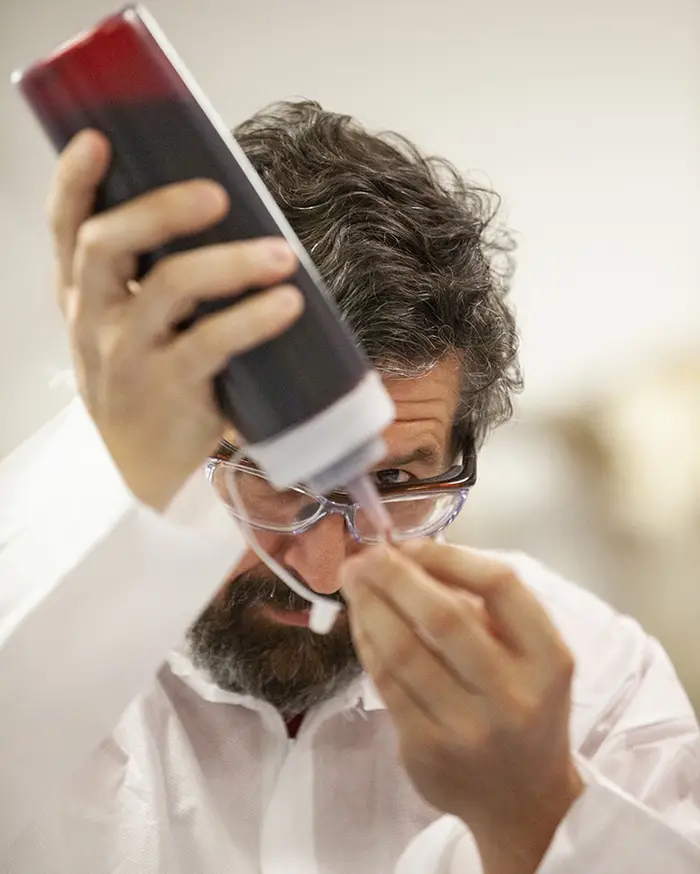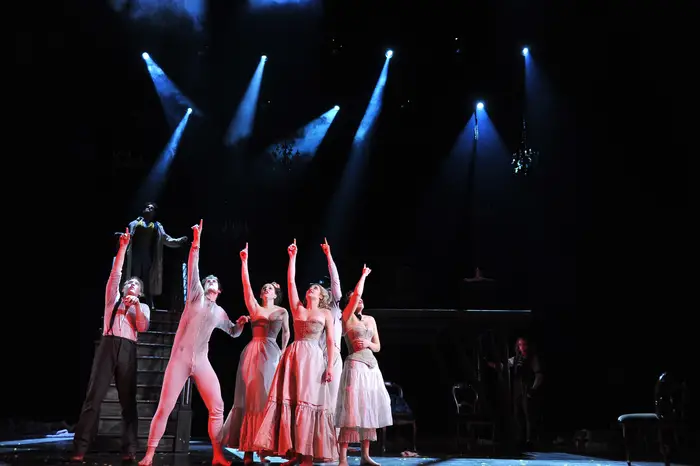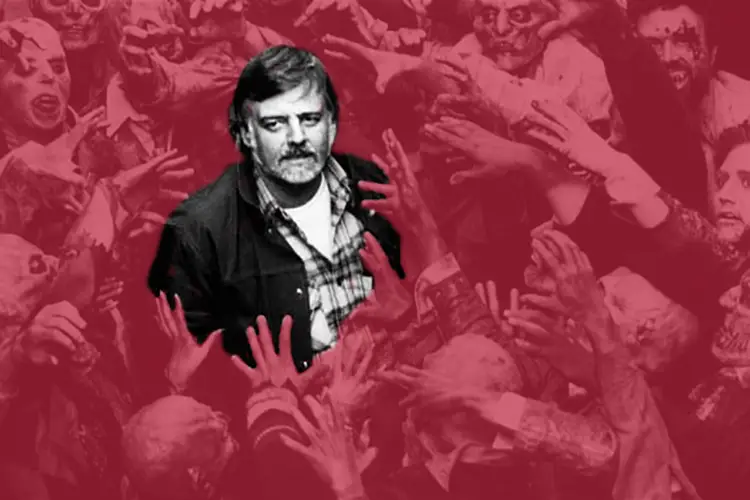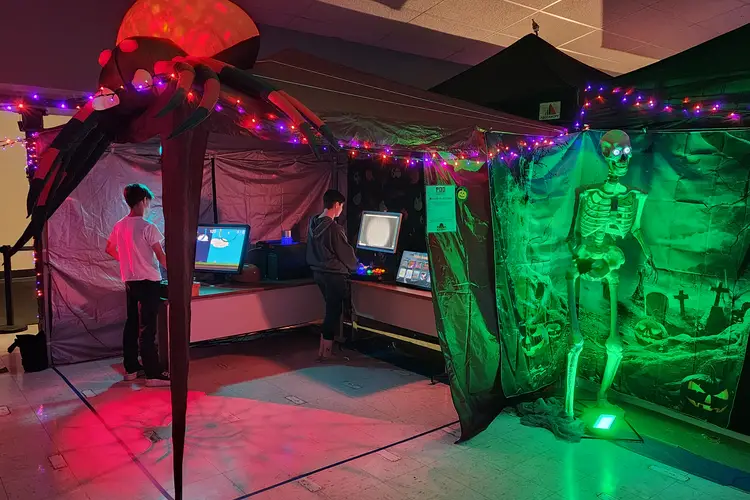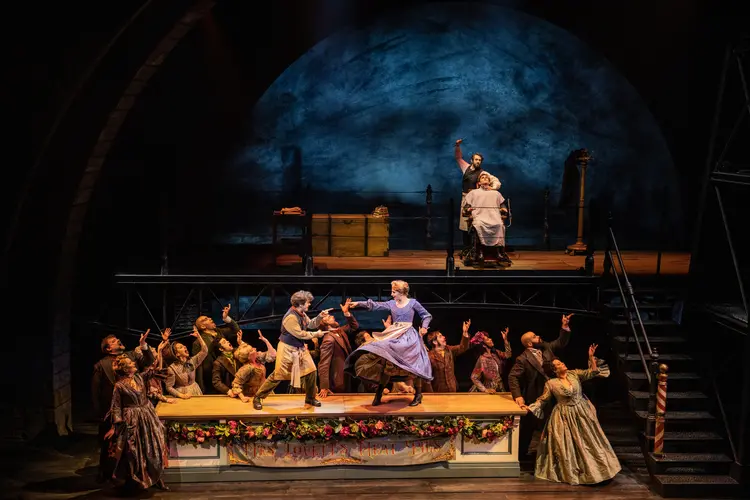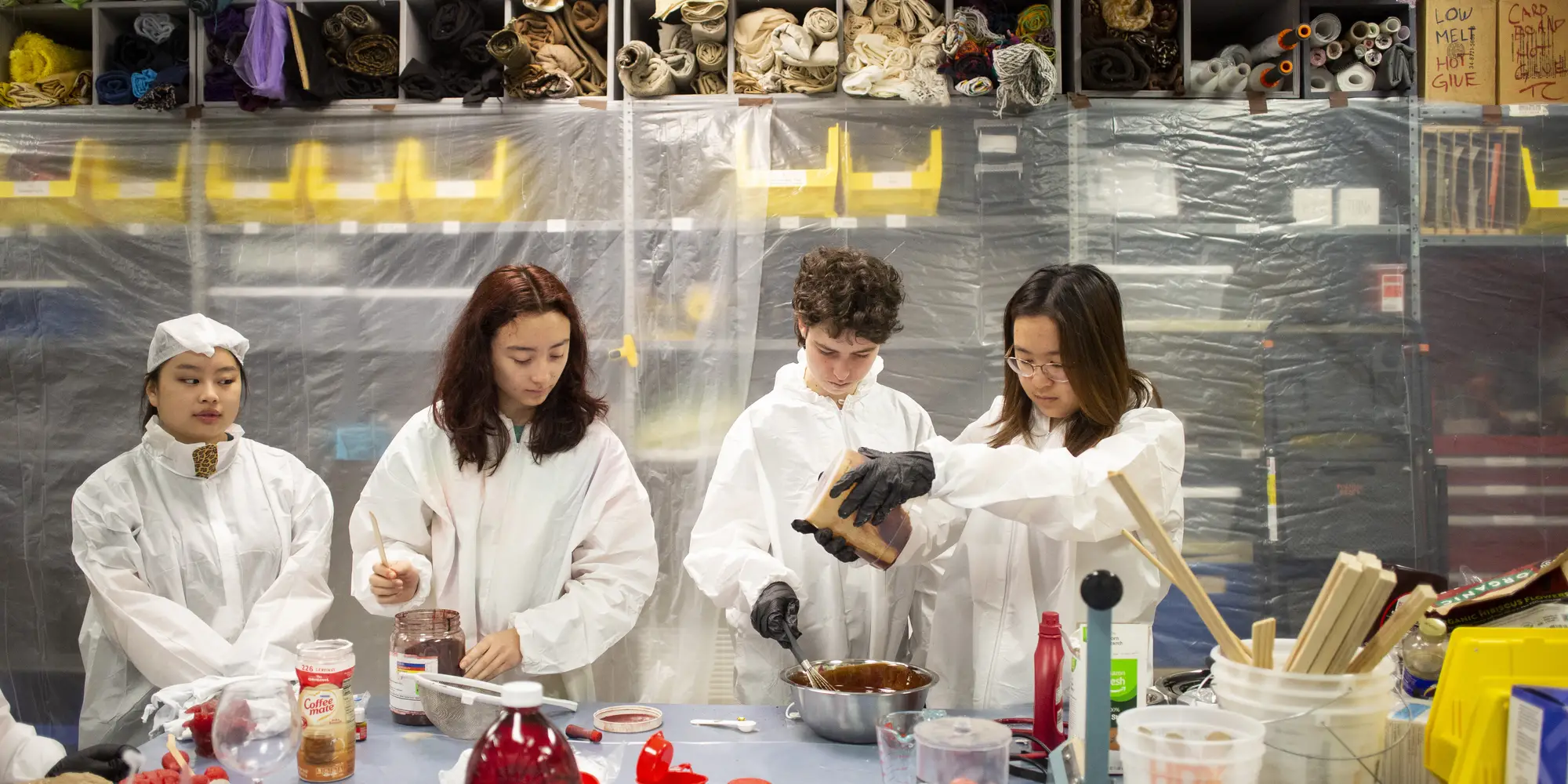
Bloody Brilliant: Pre-College Students Learn with Carnegie Mellon Prop Department
Media Inquiries
Wearing white coveralls while standing in front of plastic-covered shelves on each wall of the props department in the Purnell Center for the Arts, Arden Zemler Wu placed a capsule filled with fake blood into their mouth, then snapped it with their teeth so the gooey mixture oozed past their lips.
“It tastes like chocolate,” they said.
Zemler Wu, a senior at Prisma High School from Boston, took part in the design and production option of the Pre-College Program(opens in new window) in Carnegie Mellon University’s School of Drama(opens in new window) this summer that included trips to the props warehouse, creating molded props, and ways to use prop blood.
About a half-dozen high school students took part in the workshop led by props manager Todd Kulik(opens in new window) and senior arts technician Kristin Ward(opens in new window), joined by teaching assistants Sydney de Haan and Carolyn Burback, both juniors majoring in drama.
Jake Isenberg, a senior at the Galloway School in Atlanta, said during the six-week program he was able to try out different types of design and production techniques that he hadn’t before including sound, projections, costumes and props.
“You’re really in the weeds. It definitely tells you if you want to do this in school or not and prepares you for Carnegie Mellon,” he said. “Most of the classes and teachers are at the top of their game in their fields and it’s a tough, exciting program.”
First, Kulik led the students in mixing up a theater-friendly version of the sanguine liquid from a recipe in a book called “Bloody Brilliant” by fellow Society of Props Managers member Jennifer McClure that dubbed the concoction “the best blood recipe ever.” It consisted of corn syrup, chocolate syrup, water, corn starch, powdered nondairy coffee creamer, and yellow and red food colorings.
“It’s one thing to make the fake blood, and it’s another thing to deliver it onstage,” Kulik said.
Productions that use prop blood have to also include collaborations among the props, scenery and costume departments; as well as with a fight director to coordinate how performers deliver the effect, how the blood is used, and if the red dye 40 will affect any clothes or sets, Ward said.
“Where can we do this so we don’t stain the paint treatment?” she said, recalling the special effect used in recent CMU productions of “Sweeney Todd” and “Into the Woods.” “Richard III” used a gallon every night, amounting to “the biggest prop expense” for the show, Ward said.
One student tested out a blood pack, created using the corner of an inexpensive plastic sandwich bag and a rubber band. As it burst apart, the liquid squirted high up and splattered on the drop-ceiling tile of the room.
“I didn’t expect it to hit the ceiling, so it’s been a little bit of discovery for us as well,” Ward said. “That’s what I love about props so much, you’re never just done learning. It’s so much of a mash-up of skills that you’re always doing something new.”
Next, Kulik filled a pipette with the fake blood and attached it to a bright orange stage knife.
“You shouldn’t use blood on stage unless you have a fight director,” Kulik said. “That will ensure you use it safely.”
Pre-College 2025
Applications for the Pre-College programs will be available in mid-November 2024. Students can apply for:
- AI
- Art
- Architecture
- Computational Biology
- Computer Science Scholars
- Design
- Drama
- Music
- National High School Game Academy
- Summer Academy for Math and Science
- Summer Session
- Writing & Culture
Anyone interested can sign up for the program’s mailing list to receive updates on the application availability.
“That’s what I love about props so much, you’re never just done learning. It’s so much of a mash-up of skills that you’re always doing something new.” — Kristin Ward
Often, plain water is used at first to help predict where the blood will splash when actors use props, Kulik said.
“The action needs to happen, then the performer needs to respond to the injury and show the blood,” he said. “It’s all about the performance.”
De Haan said she enjoyed working with the Pre-College students, who asked her about her experience as a Carnegie Mellon student.
“They want to know every little tiny aspect about being a student here because it’s a big deal for them, as they’re trying to figure out their future, and if this is a viable profession for them even beyond college, so the questions just keep going and going,” she said. “It’s been awesome to give them the freedom to see what they do.”
(opens in new window)Burback said she appreciated how the students in the Pre-College program get hands-on experience, including opportunities such as the prop blood workshop
“A big part of the program I’ve seen is people doing the assignments,” Burback said. “A lot of places will just tell you about things, but here they can learn the most when they engage in projects like this.”
Until that day, her prop blood experience mainly included a stagecraft course with Kulik and Ward in her first semester of the prop rotation.
“It wasn’t quite as chaotic, this is very fun,” Burback said.
Even the Purnell Panda, the props department stuffed-animal mascot, took part, wrapped in its own plastic protective poncho.
“He has a drop of blood on him,” Burback said. “It did its job.”
